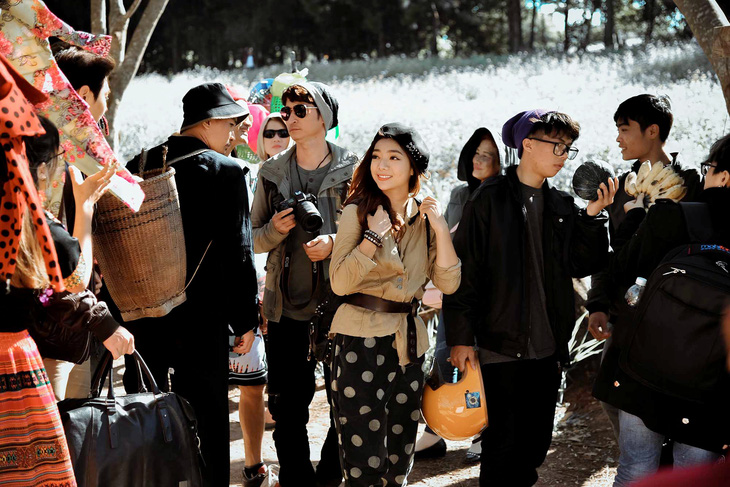
The Northwest highland market when the group of friends visit home in Lat mat 4: Nha co khach - Photo: DPCC
"There is a Ly Hai who loves Vietnamese culture like life" is the message from the producer of the series Lat mat through the details of Vietnamese culture and life shown in the films.
Producer Minh Ha affirmed that honoring Vietnamese culture is the mission that the Lat Mat crew always pursues through each film.
Highland market in Flip side 4
Although it is a horror film, Lat mat 4: Nha co khach is still brought by Ly Hai into the "big scene" of a bustling and colorful market in the Northwest highlands.
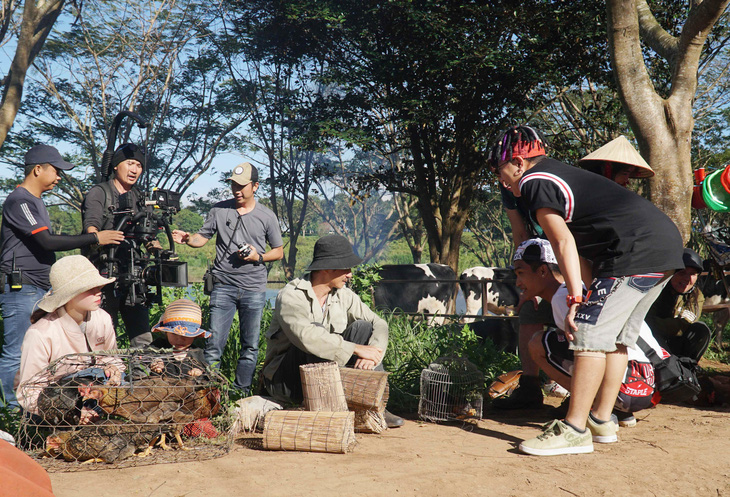
Director Ly Hai (middle) in a scene of a highland market - Photo: DPCC
To organize such a large market, the crew searched for filming locations from the Central Highlands to Lam Dong . The design team had to build and decorate a realistic market with all the specialty goods and animals typical of the highlands.
In addition, many ethnic minorities from the mountainous region were recruited as extras to participate in the market.
Cham village festival, floating market in the West in Lat mat 5
In Lat mat 5: 48h , Ly Hai exploits the image of the river delta in the West when the main character and his family flee here and are taken care of by friends.
Ly Hai chose the setting in a Cham village in Chau Doc, An Giang . The crew had to reinforce and repair many things to restore and restructure the location to make it more eye-catching, attractive and solid.
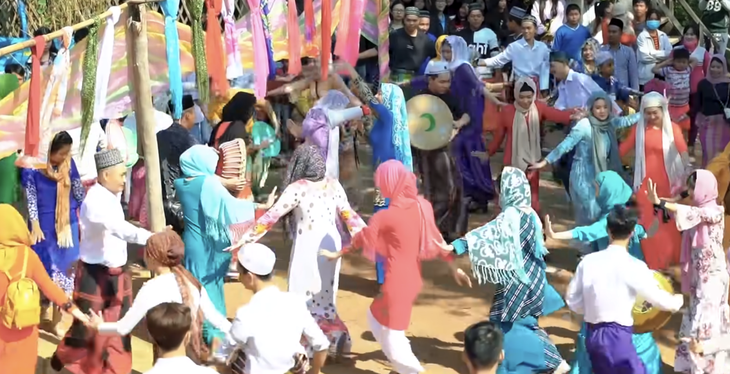
Cham village festival filmed in An Giang in the movie Lat mat 5: 48h - Photo: DPCC
Ly Hai once shared that because he is a child of the West, growing up with floating markets, rickshaws, and sampans... when he returned to the West to make a film, he incorporated familiar images from his childhood into the film.
In particular, with the large Cham village festival scene, Ly Hai invited about 1,000 extras to participate, mobilizing people from many neighboring localities such as Long Xuyen, Can Tho ... to the remote countryside to film.
The scene took a month to prepare and complete but was less than a minute long when filmed.
Ly Hai sets up a projection screen in Lat mat 6
Flip Side 6: The Fateful Ticket is still filmed in the West. Director Ly Hai chose Dinh Yen mat village in Dong Thap as the main setting.
Ly Hai was heartbroken to see this craft village gradually disappearing, no longer having as many customers and workers as before. He invested billions to restore a large workshop, recreating the working environment for the villagers as well as serving the film.
Ly Hai also bought thousands of mats to serve the scene.
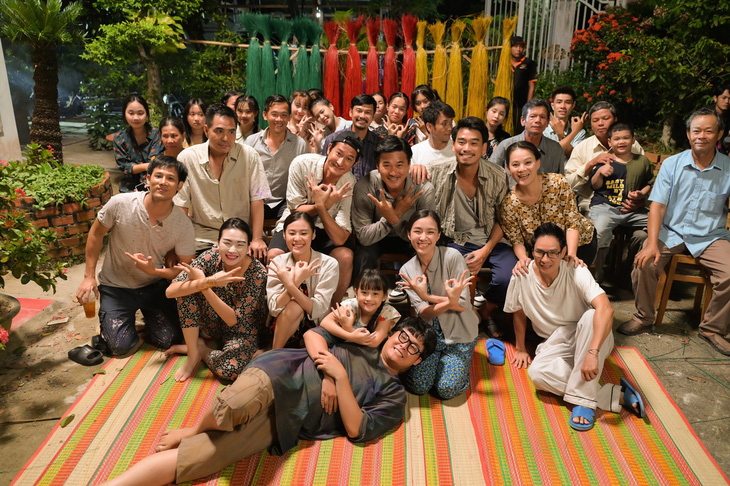
Ly Hai and the Lat Mat 6 crew filmed at Dinh Yen projection village - Photo: DPCC
He shared: "A mat costs around 100,000 VND, but I have filled the warehouse and the whole village road. How much money would be enough?
At that time I was very scared, but after witnessing the process of weaving a mat, I found the price extremely cheap compared to the effort the workers put in."
After filming, Ly Hai left the studio for anyone who needed to develop jobs there, and invited 2,000 people in Dinh Yen to watch a screening of Lat mat 6 as a thank you to the people.
Whale Festival in Flip Side 7
In Lat mat 7: Mot giau than , the story of Mrs. Hai visiting Tu Hau's son and his wife in Ninh Thuan moved many viewers.
Ly Hai chose to recreate the bustling Whale Festival, imbued with the atmosphere of the sea, specifically the Nam Hai Lang Than Festival. He researched meticulously to make every detail precise and meticulous.
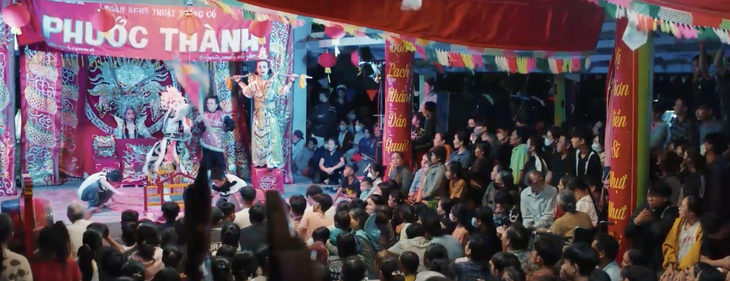
Whale Festival scene in the movie Lat mat 7: Mot giau wish - Photo: DPCC
The crew mobilized a large number of people living in the My Tan fishing port area to attend the event in the evening. Fortunately, many people enthusiastically joined in the festival atmosphere.
The most difficult part of this scene was the singing performance. Ly Hai hired a whole opera troupe from Quy Nhon to fly more than 300km just to film a scene that was less than 5 minutes long.
Source: https://tuoitre.vn/ly-hai-yeu-van-hoa-viet-nhu-sinh-menh-va-dua-vao-chuoi-lat-mat-20240524142145093.htm


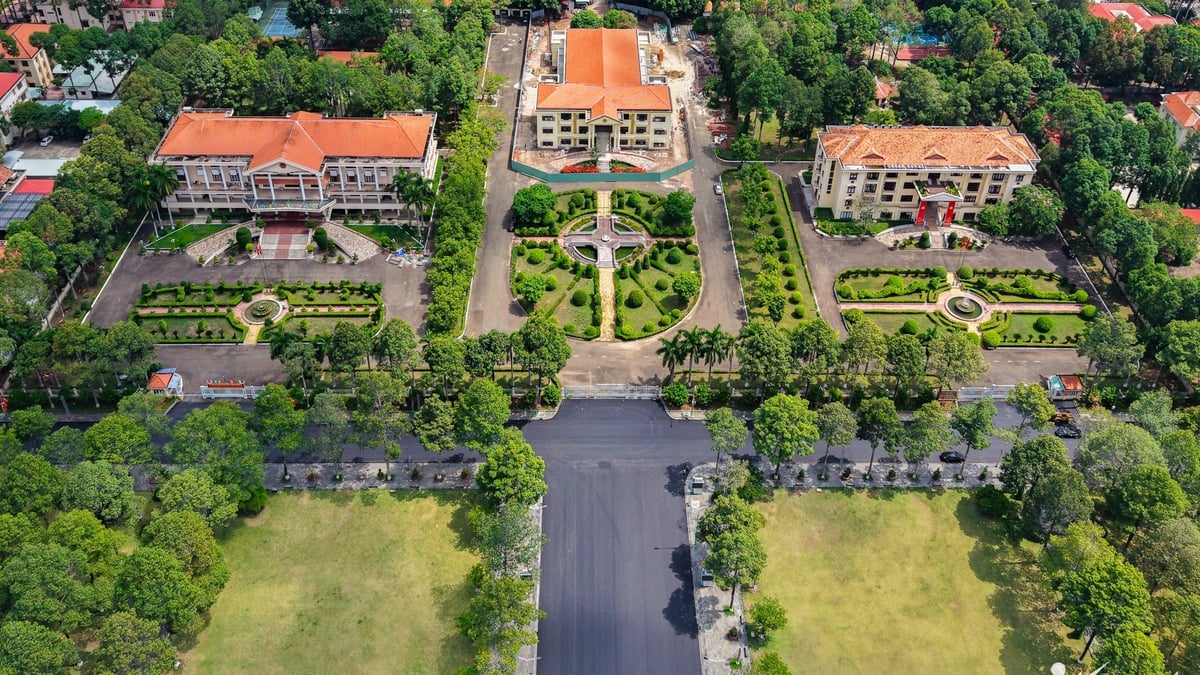
![[Photo] Prime Ministers of Vietnam and Thailand visit the Exhibition of traditional handicraft products](https://vphoto.vietnam.vn/thumb/1200x675/vietnam/resource/IMAGE/2025/5/15/6cfcd1c23b3e4a238b7fcf93c91a65dd)
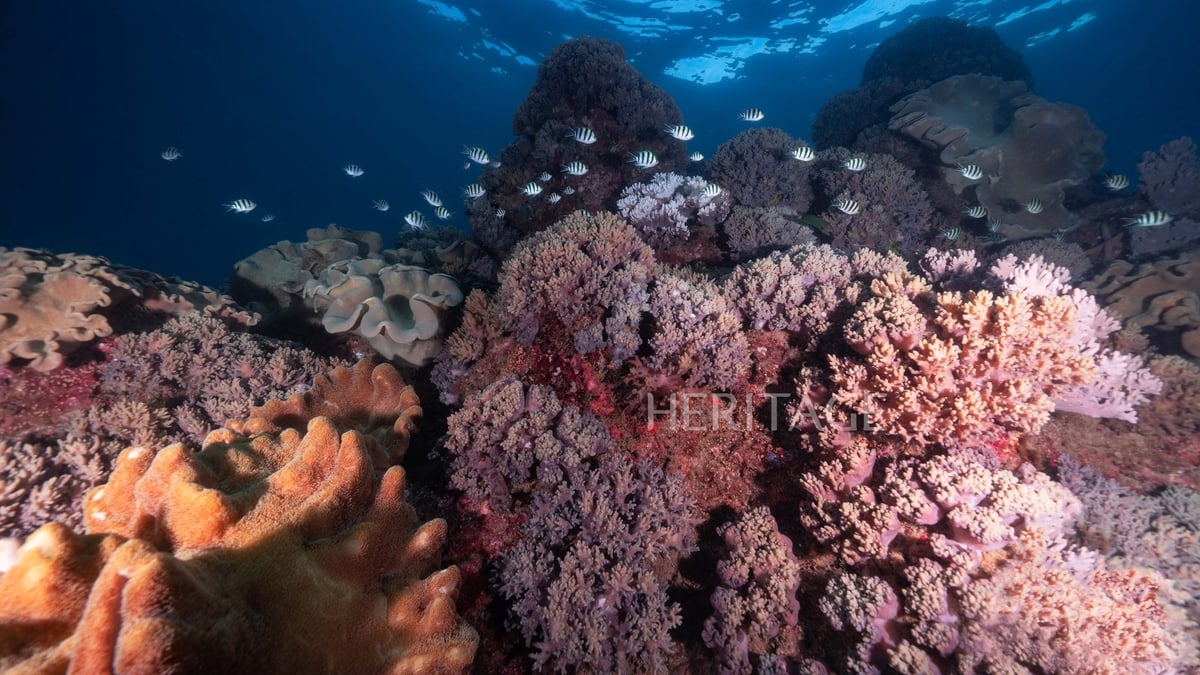
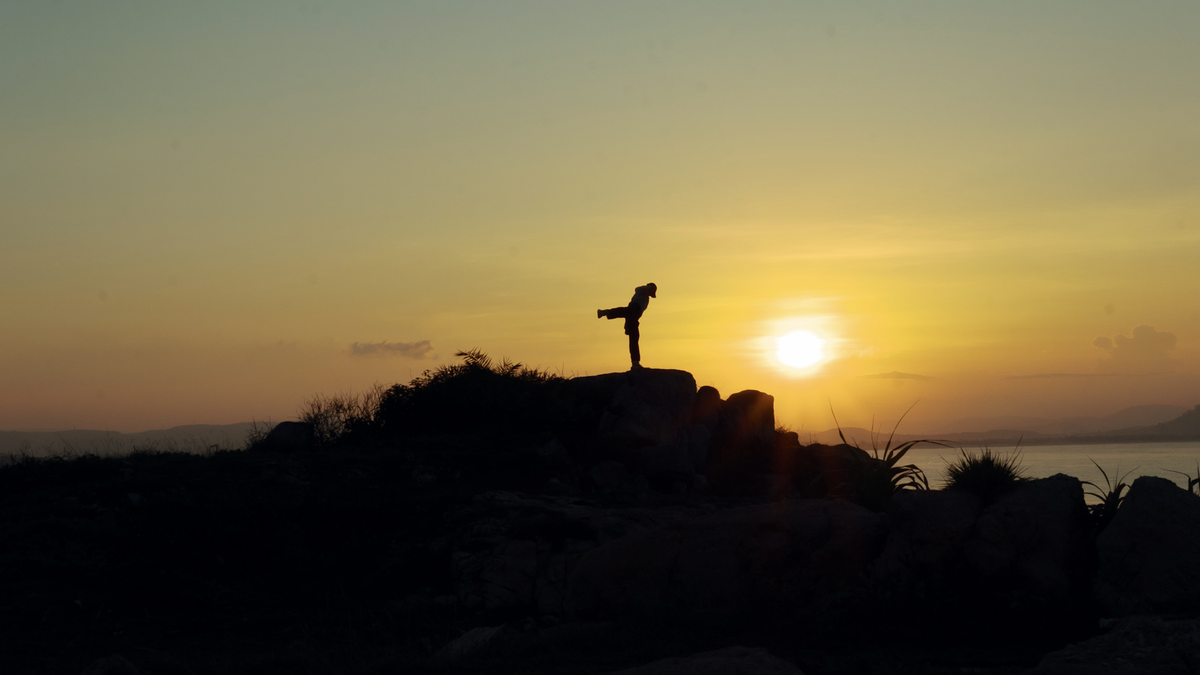
![[Photo] National Assembly Chairman Tran Thanh Man meets with Thai Prime Minister Paetongtarn Shinawatra](https://vphoto.vietnam.vn/thumb/1200x675/vietnam/resource/IMAGE/2025/5/15/e71160b1572a457395f2816d84a18b45)



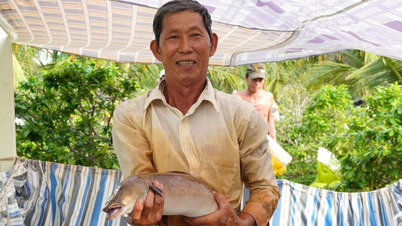

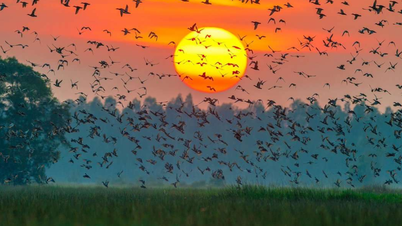




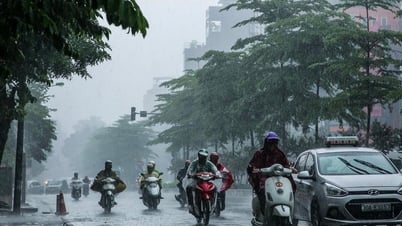



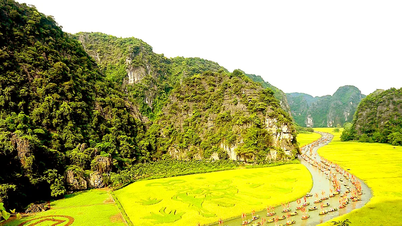

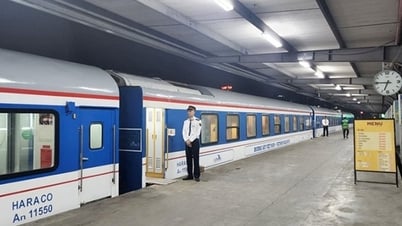
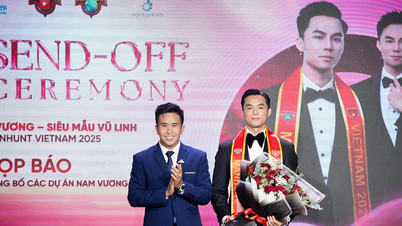

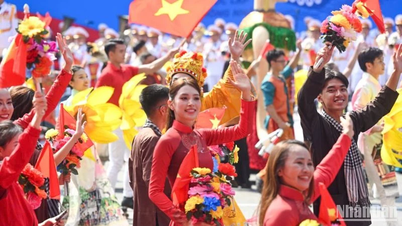

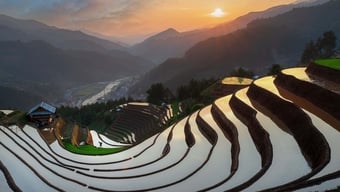




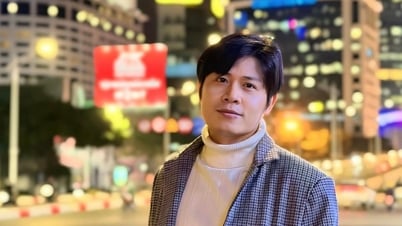
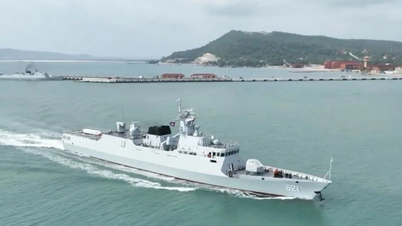

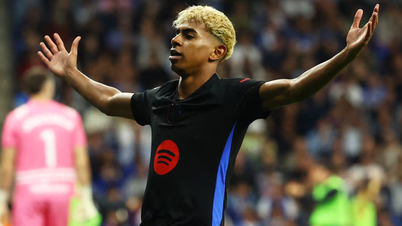
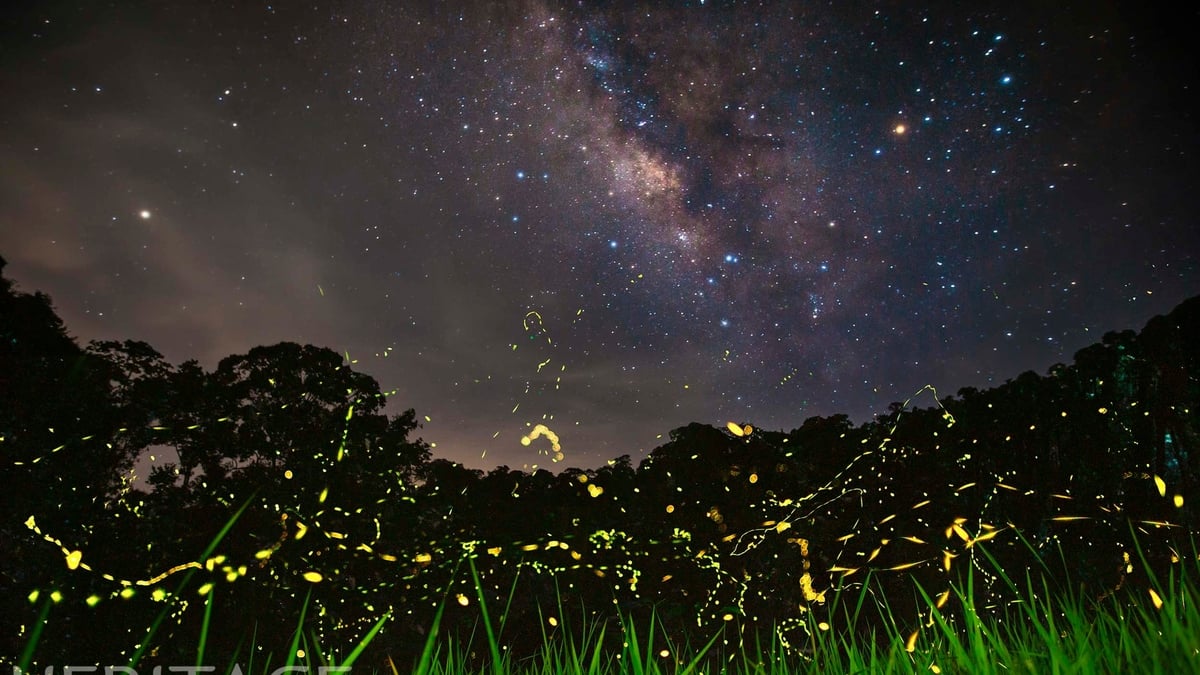
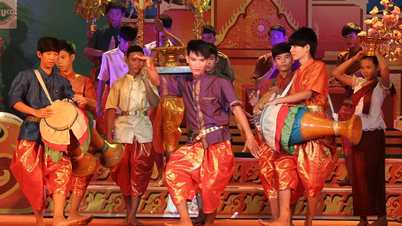

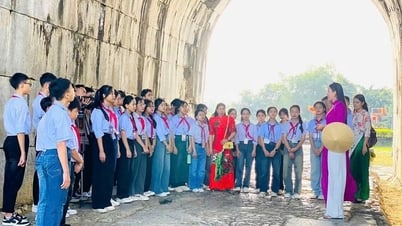

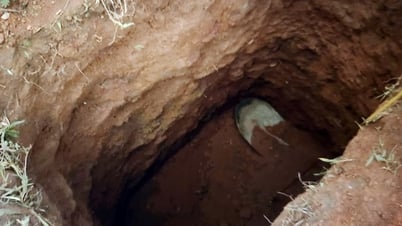
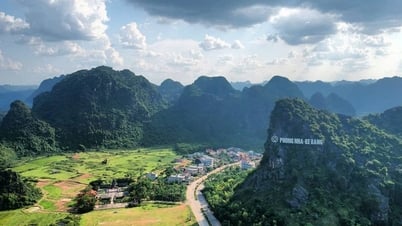

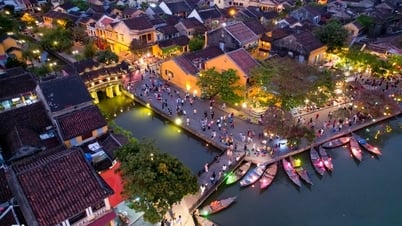

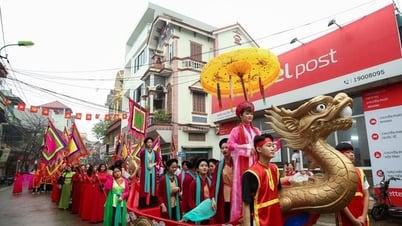

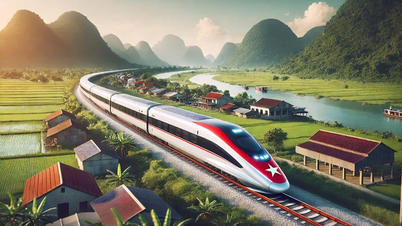
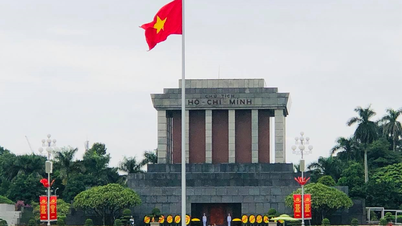

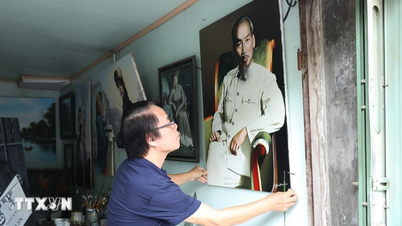

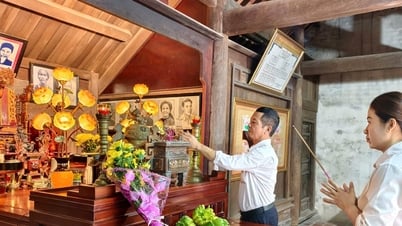

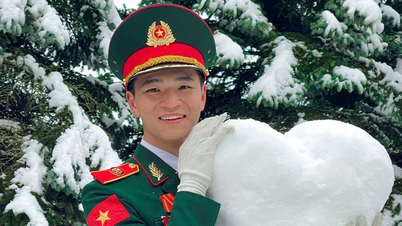









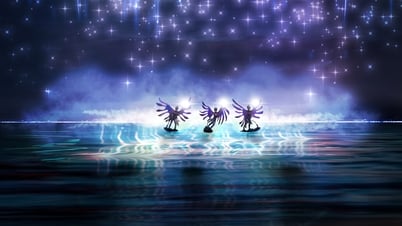

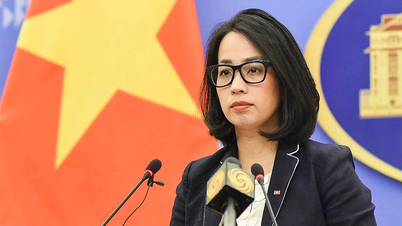

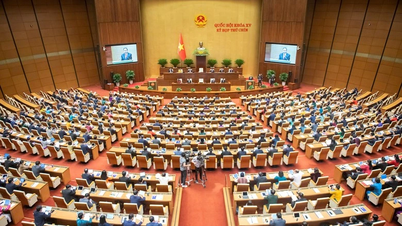
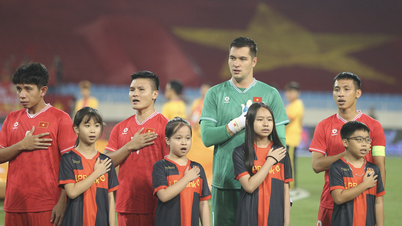
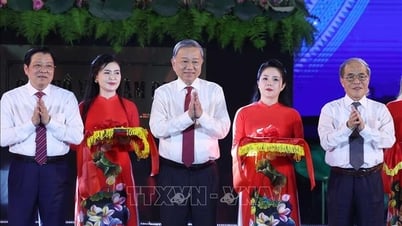

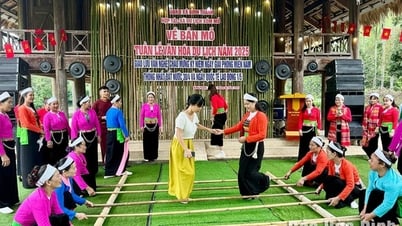

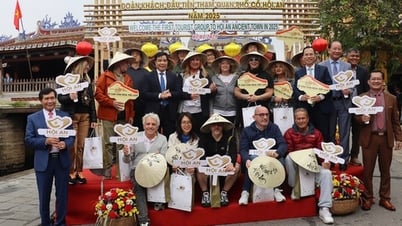

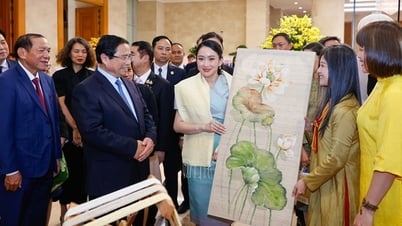

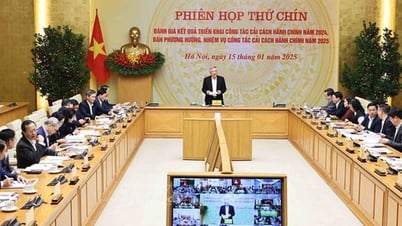
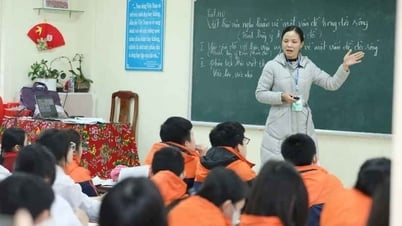

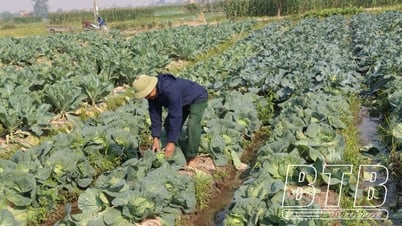



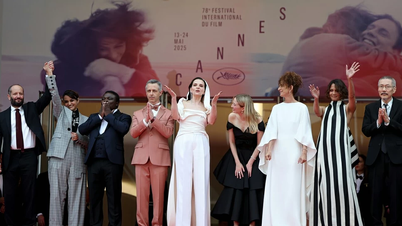




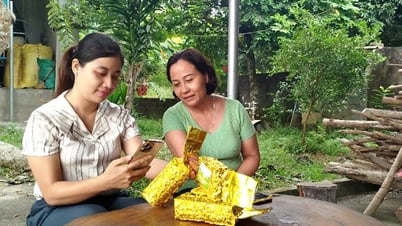

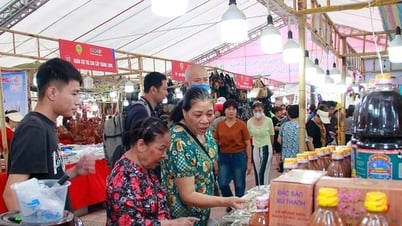


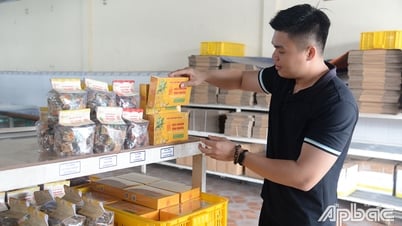

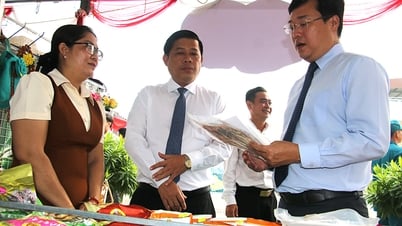
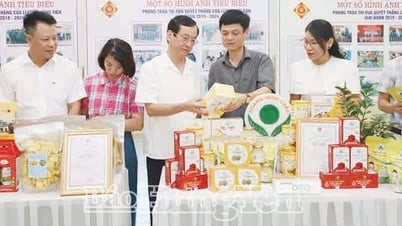

Comment (0)